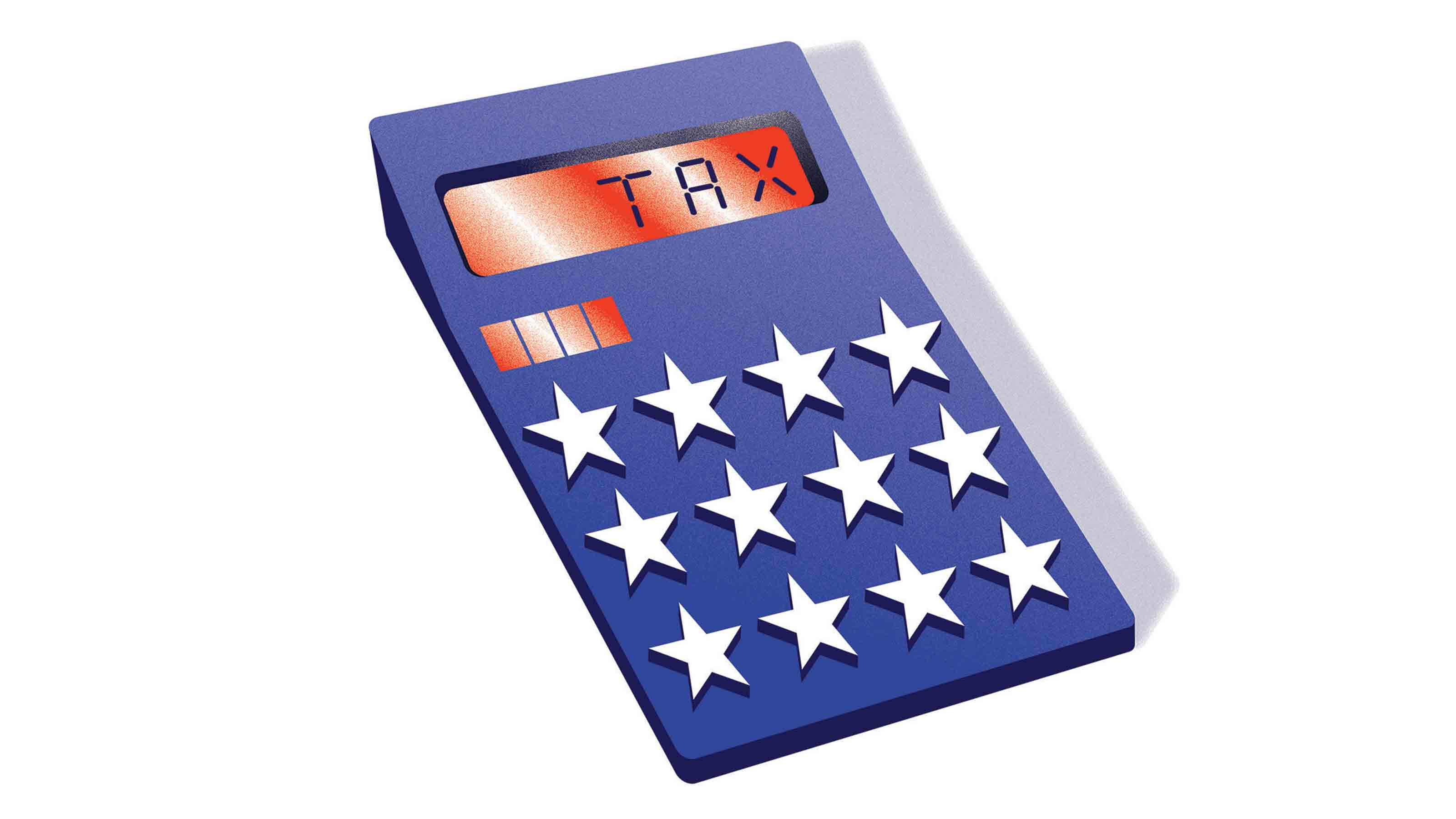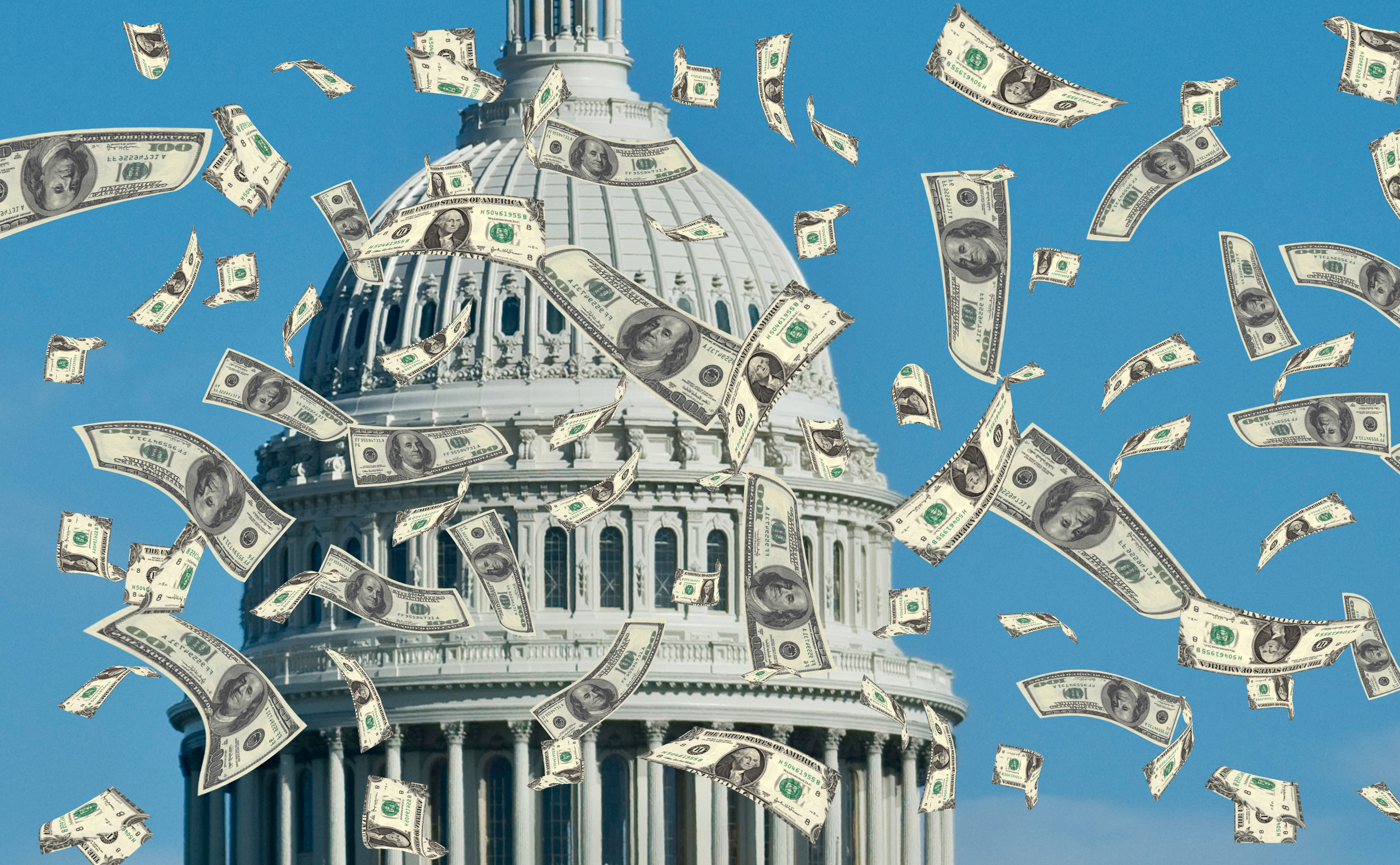2020 Election: A Redo on Taxes
Under Biden’s plan, tax hikes will be limited to people who make more than $400,000. Trump has also expressed an interest in tax relief for middle-class workers.

Joe Biden says his tax plan would increase taxes on the wealthy and offer breaks for the middle class, but at least one of his proposals could boost taxes farther down the income ladder.
A key component of Biden’s plan is that tax hikes will be limited to people who make more than $400,000. He wants to raise the highest individual income tax rate to 39.6% from 37%, restoring the top rate that was in place before the 2017 Tax Cuts and Jobs Act. (In 2020, the 37% top rate kicks in for single taxpayers with taxable income of more than $518,400, or for married couples with taxable income of more than $622,050.) Biden also wants to cap itemized deductions for the wealthiest Americans at 28% and end favorable capital gains rates for anyone with income of more than $1 million. Those taxpayers would pay their ordinary income rate of 39.7% on capital gains and dividends. Currently, investments and other assets held for more than a year are taxed at a rate of 0% to 23.8%, depending on income.
A plan to change the way inherited assets are taxed could have a broader impact. Now, when someone inherits stock, mutual funds or other assets, the cost basis of those assets is stepped up to their value on the date of the original owner’s death. For example, if the original owner purchased shares of stock for $10 and its value was $50 a share when he died, his heirs would only owe taxes on any increase in value over $50 when they sell the shares. Critics of the “step up” say it discourages individuals from selling investments that have increased in value because they can leave them to their heirs, tax-free. But in addition to eliminating a valuable tax break for heirs, eliminating the step-up could create compliance headaches, because heirs would have to track down the original cost of assets that may have been owned for many years.
From just $107.88 $24.99 for Kiplinger Personal Finance
Become a smarter, better informed investor. Subscribe from just $107.88 $24.99, plus get up to 4 Special Issues

Sign up for Kiplinger’s Free Newsletters
Profit and prosper with the best of expert advice on investing, taxes, retirement, personal finance and more - straight to your e-mail.
Profit and prosper with the best of expert advice - straight to your e-mail.
Biden has also proposed a suite of tax breaks for low- and middle-income families, including:
- An $8,000 tax credit to help offset the costs of child care.
- A tax exclusion for student loans that have been forgiven. Currently, if a borrower’s loans are forgiven, the amount is treated as taxable income (there are exceptions for borrowers who are eligible for certain public service loan programs).
- A refundable tax credit for low- and middle-income workers who contribute to IRAs and employer-provided retirement savings plans. Biden says the current system, which allows all workers to deduct their contributions, primarily benefits wealthier workers.
- Catch-up contributions to retirement plans for caregivers of any age who leave the workforce for at least a year. Currently, catch-up contributions are limited to workers age 50 or older. Biden also proposes a $5,000 tax credit for family caregivers.
Trump’s tax plan. The Trump administration’s plan to release a package of tax proposals was put on hold as other developments—the coronavirus pandemic in particular—have taken center stage. But based on Trump’s public statements, one of his top tax priorities in his second term would be to make provisions in the Tax Cuts and Jobs Act permanent. Unless Congress acts, most of the individual tax cuts included in the act will expire in 2025.
Trump has also expressed an interest in providing more tax relief for middle-class workers. Earlier this year, National Economic Council Director Larry Kudlow said Trump was considering a “Tax Cuts 2.0” that would provide a second round of tax cuts focused on the middle class.
In the short term, though, most of Trump’s tax proposals are focused on stimulating the economy, which has been devastated by the pandemic. He has proposed stimulating the economy by cutting payroll taxes, which would increase the size of workers’ paychecks. He has also suggested he would support a $4,000 tax credit for Americans who travel domestically. The travel industry, which has been hard hit by the pandemic, says such a credit would encourage people to take vacations, but it’s unlikely to gain much support in Congress.
Sandra Block, Lisa Gerstner, Nellie S. Huang and Anne Smith contributed to this story.
Profit and prosper with the best of Kiplinger's advice on investing, taxes, retirement, personal finance and much more. Delivered daily. Enter your email in the box and click Sign Me Up.
-
 I'm want to give my 3 grandkids $5K each for Christmas.
I'm want to give my 3 grandkids $5K each for Christmas.You're comfortably retired and want to give your grandkids a big Christmas check, but their parents are worried they might spend it all. We ask the pros for help.
-
 If You're Not Doing Roth Conversions, You Need to Read This
If You're Not Doing Roth Conversions, You Need to Read ThisRoth conversions and other Roth strategies can be complex, but don't dismiss these tax planning tools outright. They could really work for you and your heirs.
-
 Could Traditional Retirement Expectations Be Killing Us?
Could Traditional Retirement Expectations Be Killing Us?A retirement psychologist makes the case: A fulfilling retirement begins with a blueprint for living, rather than simply the accumulation of a large nest egg.
-
 5 Types of Gifts the IRS Won’t Tax: Even If They’re Big
5 Types of Gifts the IRS Won’t Tax: Even If They’re BigGift Tax Several categories of gifts don’t count toward annual gift tax limits. Here's what you need to know.
-
 The 'Scrooge' Strategy: How to Turn Your Old Junk Into a Tax Deduction
The 'Scrooge' Strategy: How to Turn Your Old Junk Into a Tax DeductionTax Deductions We break down the IRS rules for non-cash charitable contributions. Plus, here's a handy checklist before you donate to charity this year.
-
 Tax Refund Alert: House GOP Predicts 'Average' $1,000 Payouts in 2026
Tax Refund Alert: House GOP Predicts 'Average' $1,000 Payouts in 2026Tax Refunds Here's how the IRS tax refund outlook for 2026 is changing and what steps you can take now to prepare.
-
 New IRS Changes to FSA Contribution Limits for 2026: What to Know
New IRS Changes to FSA Contribution Limits for 2026: What to KnowHealth Care Flexible Spending Accounts have tax advantages worth looking into, especially in light of new IRS changes.
-
 Is a New $25,000 Health Care Tax Deduction Coming in 2026?
Is a New $25,000 Health Care Tax Deduction Coming in 2026?Tax Policy A proposal from GOP Sen. Josh Hawley adds to the chatter about health care affordability.
-
 3 Ways High-Income Earners Can Maximize Their Charitable Donations in 2025
3 Ways High-Income Earners Can Maximize Their Charitable Donations in 2025Tax Deductions New charitable giving tax rules will soon lower your deduction for donations to charity — here’s what you should do now.
-
 An HSA Sounds Great for Taxes: Here’s Why It Might Not Be Right for You
An HSA Sounds Great for Taxes: Here’s Why It Might Not Be Right for YouHealth Savings Even with the promise of ‘triple tax benefits,’ a health savings account might not be the best health plan option for everyone.
-
 10 Retirement Tax Plan Moves to Make Before December 31
10 Retirement Tax Plan Moves to Make Before December 31Retirement Taxes Proactively reviewing your health coverage, RMDs and IRAs can lower retirement taxes in 2025 and 2026. Here’s how.